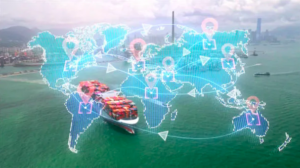With the Covid-19 pandemic, the Asia-Pacific region (APAC) is facing a new challenge to its economic and trade engine. As the virus kept spreading, global economic issues and public health took center stage in Asia-Pacific countries from the beginning of 2020 until today.
As a result, the IMF growth forecast for the region stands at zero percent in 2020, the worst performance in 60 years, with China’s growth declining from 6.1% in 2019 to a projected 1.2% in 2020. An even more significant contraction is expected in the US, where GDP growth could drop to -6% in 2020.
This grim outlook raises the question of the future of regional cooperation and trade agreements in Asia-Pacific, and how countries will adapt in the post-Covid-19 world.
FTAs as a bedrock on which the APAC trade engine was built
Over the past 20 years, APAC has seen a tremendous increase in the number of Free Trade Agreements (FTA), from a total of 51 FTA initiatives in 2000 to 261 as of the first quarter of 2020, of which about 70% are bilateral. FTAs drawing economies closer together and allowing for increasingly open markets, Asia-Pacific signatory countries have enjoyed higher export power in a broader array of markets, with local firms making greater use of FTA preferences.

However, despite the remarkable growth in the number of FTAs, Asia-Pacific Regional Trade Agreements (RTA) contrast sharply with their European counterparts. For example, in the European Union, there is a higher commitment to abide by the legal obligations contained in the treaties establishing the FTA and, most importantly, more political will to execute the agreements. In this regard, FTAs in the Asia-Pacific region have not adequately resolved the problems of cooperation, collaboration, and regional integration that signatory countries aimed at achieving.
In short, the existence of FTA rules and arrangements has not done much in the way of changing the behavior of most Asia-Pacific countries (much like the US, China, and Russia). It has not deterred them from seeking increased bargaining power and, eventually, from advancing their economic interests. In this respect, the EU stands as an exception rather than a model…
Changing priorities could bring FTAs to a halt
With the COVID-19 pandemic, the very nature of what is being seen as critical issues in APAC has changed fundamentally since January 2020. Of immense relevance to the region, the balance between public health and economic priorities, at the national, regional and global levels, has suddenly become much more challenging to strike. Initially established to deal almost exclusively with economic and trade issues, several members of RTAs and FTAs like the Asia-Pacific Economic Cooperation (APEC), the Association of South-East Asian Nations (ASEAN), the Regional Comprehensive Economic Partnership (RCEP) or the Trans-Pacific Partnership (TPP) have resisted pressure to introduce any new focus into their agenda, such as public health.
In previous years, for example, the 9/11 events brought anti-terrorism to APEC’s top agenda, as well as in many other regional organizations and agreements. In 2003, under the pressure from the US and some of its closest allies, an official APEC declaration raised security issues to a status equal to trade and other economic issues. The statement caused some friction with other member States more keen on focusing on the original economic and business agenda, such as China, Singapore, Vietnam, Malaysia, and Thailand.
However, the radical change in the situation brought about by Covid-19 has imposed several critical issues with significant economic and trade consequences which could prove very detrimental for the future of FTAs in the region. Indeed, RTAs and FTAs cannot avoid expanding their original scope to new aspects such as health issues, with the very real risk that these new issues take precedence, at least in the short to medium term, over trade. A temporary change in DNA, so to speak… In this matter, countries’ responses to both Covid-19 and economic stagnation have greatly varied, based on the intensity of their concerns about the spread of the virus and its impact on their safety and domestic affairs.
Generally speaking, countries in Asia-Pacific have been focusing more on internal issues rather than international trade and inward/outward investments. The primary concern is how to minimize economic damage and save lives, rather than generate new wealth. This reality makes it a certainty that the growth in FTAs will now stand at its lowest level, at least for the next five years.
In addition, Small and Medium-sized Enterprises (SME), which are at the heart of APAC FTAs, are set to be particularly impacted by the economic contraction brought about by the global lock-down. Massive programs of financial assistance will be crucial to sustain SME activity and prevent a flurry of bankruptcies. Saving existing FTAs will be at that price…
Furthermore, local investment and trade are now restricted mainly to strategic and essential goods, such as healthcare equipment and medicine. Consequently, countries will be encouraged to refrain from opening up these strategic sectors any further, thus setting the stage for a near-future restriction in the scope of existing FTAs.
From globalization to regionalization
Despite tremendous growth in the number of FTAs in APAC in the last two decades, shifting priorities as a result of the Covid-19 pandemic, from free trade and liberalization to health and public affairs, can only turn virtuous again for the region’s economies if local governments commit to increased cooperation in battling the pandemic and to restoring trade after the crisis.
Two scenarios could unfold. Firstly, there is a strong possibility that ASEAN could increase regional cooperation separately from other organizations, like APEC, RCEP or TPP, in addressing the negative economic impact of Covid-19. If such a “decoupling” between trade blocs were to take place, APAC may turn into a trade bloc of its own, relatively cut off from external trade partners. This could trigger more patterns of regionalization and effectively end globalization as we know it.
Secondly, depending on how China’s economy will come out of the crisis, it is likely that the Middle Kingdom may be able to play the role of APAC’s growth relay once more, as was the case in the aftermath of the Asian Crisis of 1997 as well as the 2008 Global Financial Crisis. China may, therefore, find itself in the enviable position of subtly substituting multilateral agreements with bilateral ties, a relationship it has felt more comfortable with in that it guarantees its domination due to the uneven balance of power.
In both scenarios, we may very well end up with an Asia-Pacific region trading increasingly within itself, under a level of Chinese influence not seen since the 18th Century…
Picture credits: businesskorea.co.kr






Be First to Comment